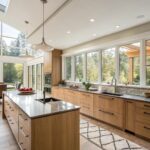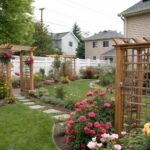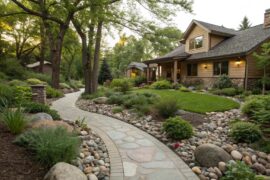Shaded areas in gardens often present unique challenges, but they also offer extraordinary opportunities for creating serene, cool retreats filled with texture, subtle colors, and interesting plant combinations. As we explore the hidden potential of these darker corners, you’ll discover that shade gardens can become some of the most enchanting spaces in your landscape.
Understanding Different Types of Shade
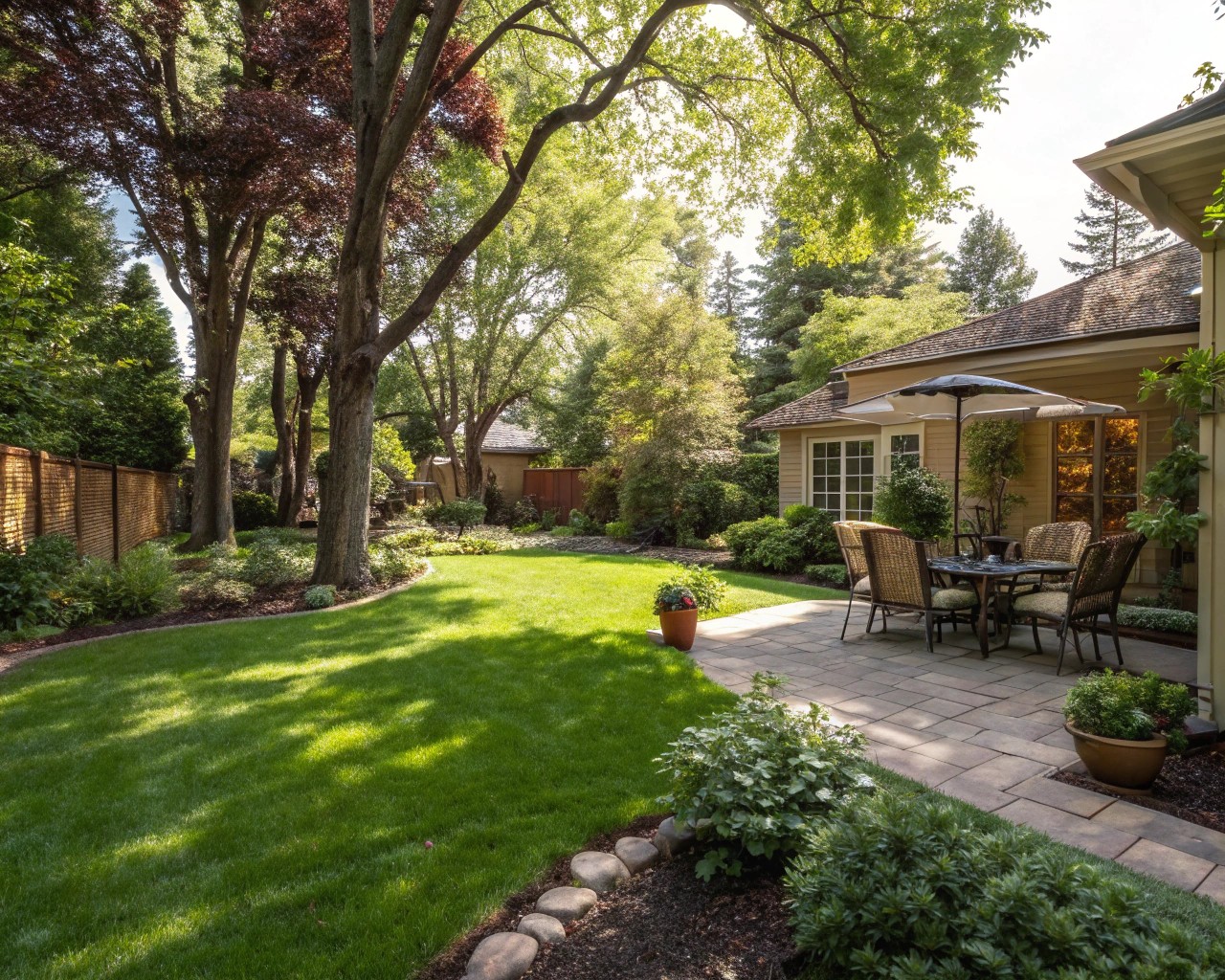
Before selecting plants or designing your shade garden, it’s essential to understand exactly what type of shade you’re working with. Not all shade is created equal, and different plants thrive in different light conditions.
Types of Shade Environments
| Shade Type | Description | Hours of Direct Sun | Best For |
|---|---|---|---|
| Partial Shade | Areas receiving 3-5 hours of direct sunlight daily | 3-5 hours | Wide variety of plants including many flowering perennials |
| Dappled Shade | Filtered light through tree canopies | Variable | Woodland plants, ferns, hostas |
| Moderate Shade | Areas that receive minimal direct sunlight | 1-3 hours | Shade-tolerant perennials and ground covers |
| Deep Shade | Areas that receive little to no direct sunlight | <1 hour | Specialized shade-loving plants, mosses, and certain ferns |
Landscape designer Heather, whose Vermont gardens showcase stunning shade plantings, stresses that understanding your specific type of shade is the first step toward success. She highlights the crucial distinction between dry shade, often found under trees, and the damp shade typical of a north-facing wall, noting that plant choices depend heavily on these conditions.
Another critical distinction is between dry and damp shade. Under trees, particularly shallow-rooted varieties like maples and beeches, soil tends to be dry as the trees compete for moisture and nutrients. Conversely, areas shaded by buildings might retain moisture longer, creating damp shade conditions.
Design Principles for Creating Stunning Shade Gardens
Embrace Texture and Foliage
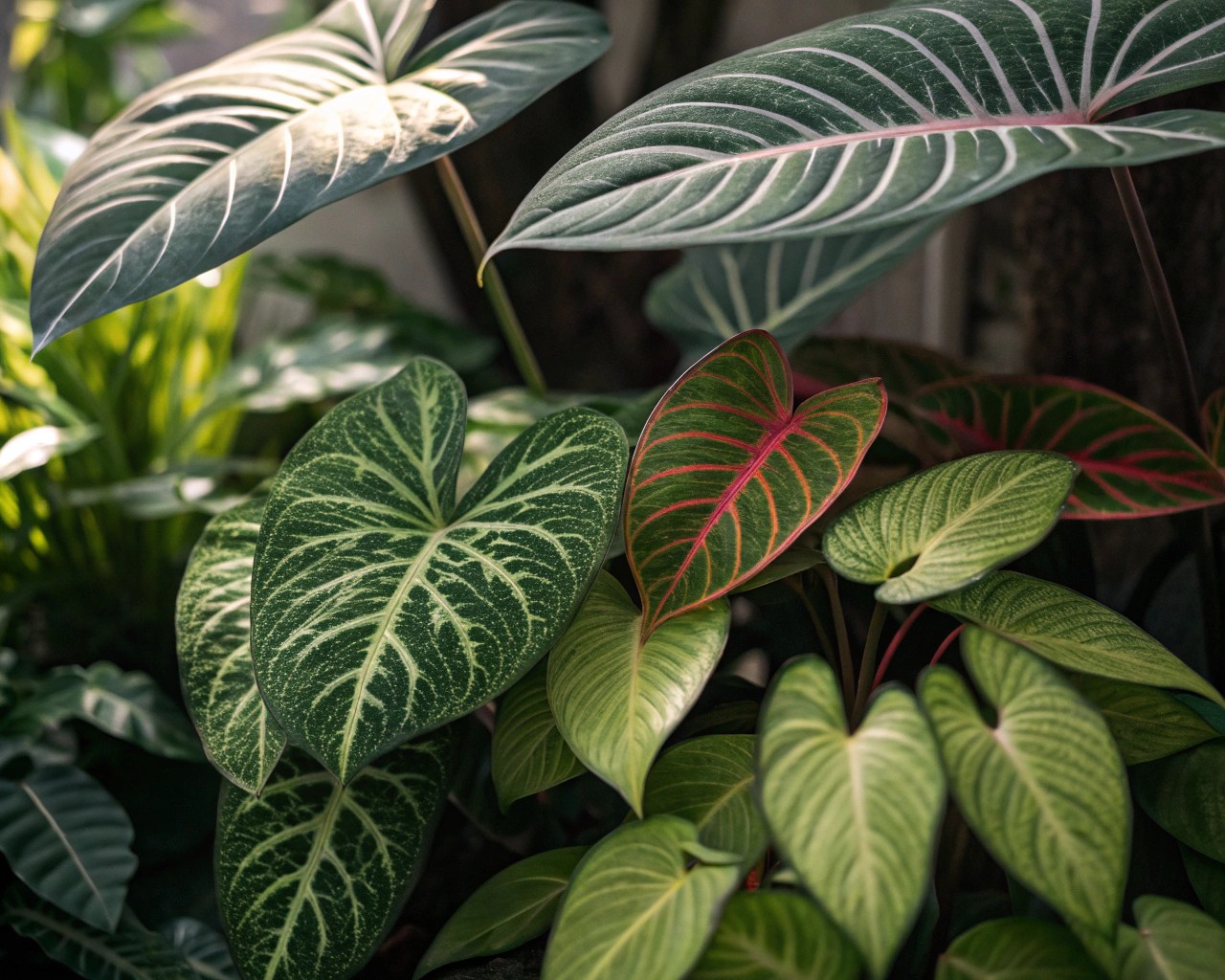
In shade gardens where flowering plants might be limited, texture becomes a primary design element. When working with clients whose gardens receive minimal sunlight, I often recommend focusing on foliage diversity rather than flowers.
Design experts often note that in shade gardens, where flower color options can be restricted, focusing on texture becomes particularly important for visual appeal.
Layer Your Plantings

One of the most effective strategies for creating visual interest in shade gardens is layering—arranging plants of different heights to create a natural, forest-like structure.
Consider this three-tier approach:
1. Tall elements: Small trees, large shrubs, or climbing plants on structures
2. Mid-level plants: Medium-sized shrubs, tall perennials
3. Ground level: Low-growing perennials, groundcovers, and bulbs
Garden experts often advise mimicking nature by layering plants—using trees, shrubs, and ground cover—to add visual interest and make the most effective use of the available space.
Use Light-Enhancing Strategies
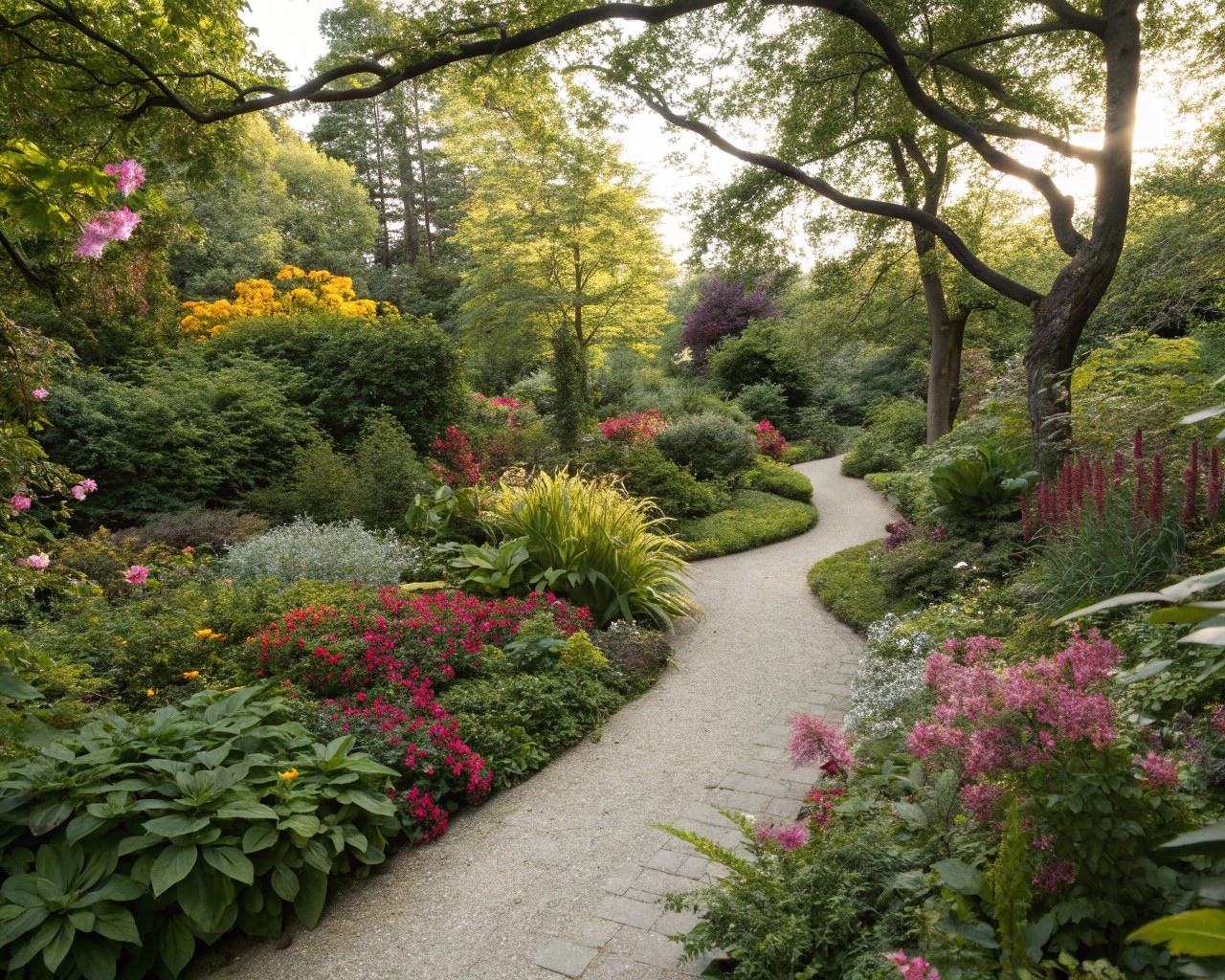
A common challenge in shade gardens is the perception of darkness. Designers frequently employ specific techniques to brighten these spaces:
- Light-colored hardscaping: Pale stone paths or light-colored mulch reflect available light
- Bright foliage: Plants with chartreuse, gold, or variegated leaves add luminosity
- White or pale flowers: These stand out dramatically against darker backgrounds
- Mirrors or reflective surfaces: Strategically placed to bounce light into darker corners
- Strategic lighting: Solar or low-voltage landscape lighting
For instance, when tackling a shaded backyard bordered by trees, garden designer Susanna Grant specifically selected “shrubs with bright yellow leaves,” recognizing that such foliage is highly effective at introducing a sense of light into dim garden areas.
Selecting the Perfect Plants for Shade
Shrubs and Trees for Shade

The backbone of any shade garden includes carefully selected woody plants that thrive in low-light conditions:
- Hydrangeas: Excellent for partial shade, providing dramatic blooms in summer
- Japanese Maples: Offering delicate foliage and sculptural form
- Rhododendrons and Azaleas: Providing spectacular spring flowers
- Mountain Laurel (Kalmia): Native shrub with beautiful spring blooms
- Japanese Spirea: Some varieties like ‘Golden Princess’ offer bright yellow foliage that lights up shady spots
Perennials for Shade Gardens
| Plant | Light Preference | Special Features | Season of Interest |
|---|---|---|---|
| Hostas | Partial to full shade | Dramatic foliage in many colors and sizes | Spring to fall |
| Ferns | Dappled to deep shade | Elegant, feathery texture | Spring to fall |
| Astilbes | Partial to full shade | Feathery plumes in various colors | Summer |
| Heuchera (Coral Bells) | Partial to full shade | Colorful foliage year-round | Year-round |
| Bleeding Heart | Partial to full shade | Heart-shaped flowers on arching stems | Spring |
| Hellebores | Partial to full shade | Early blooming, often in late winter | Winter to spring |
Experts suggest thinking vertically when choosing plants for a shade garden, aiming to create layers of plantings with different heights. A successful combination might involve pairing a tall, arching Solomon’s seal with an underplanting of coral bells (like ‘Berrie Smoothie’) and a groundcover such as yellow-flowered fumewort.
Case Study: The Woodland Transformation
One particularly rewarding project involved transforming what was once “a jungle of wild sumac, aggressive vines, and thorny brambles” into a tranquil woodland retreat. The client’s property had mature trees but was otherwise neglected and filled with debris.
After clearing the invasive plants and trash, the original native trees were preserved, including maples, oaks, and catalpas. Paths were designed with gentle curves rather than straight lines, creating “an air of mystery” that invited visitors to “meander slowly through the garden, in order to discover what lies beyond each and every bend”.
A small pond was added for both visual interest and to attract wildlife, while carefully selected shade-tolerant plants were arranged in naturalistic groupings. The result was a peaceful woodland garden that the clients described as “a healing space” where they could escape the stresses of daily life.
Practical Tips for Successful Shade Gardening
Soil Preparation is Critical
In shade gardens, especially under trees, soil quality often presents challenges. The competition from tree roots and years of leaf decomposition can lead to depleted soil.
Gardening resources often recommend improving soil in shaded areas, which can be impoverished (especially under trees where roots compete), by adding compost and organic matter to boost nutrients.
Manage Moisture Carefully
It’s a common misconception that shade always means moisture; gardening experts point out this isn’t always true, particularly under large trees. Careful water management is key: ensure plants receive adequate moisture but avoid waterlogging, which can cause root rot.
For gardens under shallow-rooted trees where competition for water is fierce, consider:
- Installing drip irrigation systems
- Using drought-tolerant shade plants like barrenwort (Epimedium) or lungwort (Pulmonaria)
- Creating raised planters to minimize root competition
- Applying a layer of organic mulch to help retain moisture
Create Visual Impact with Containers
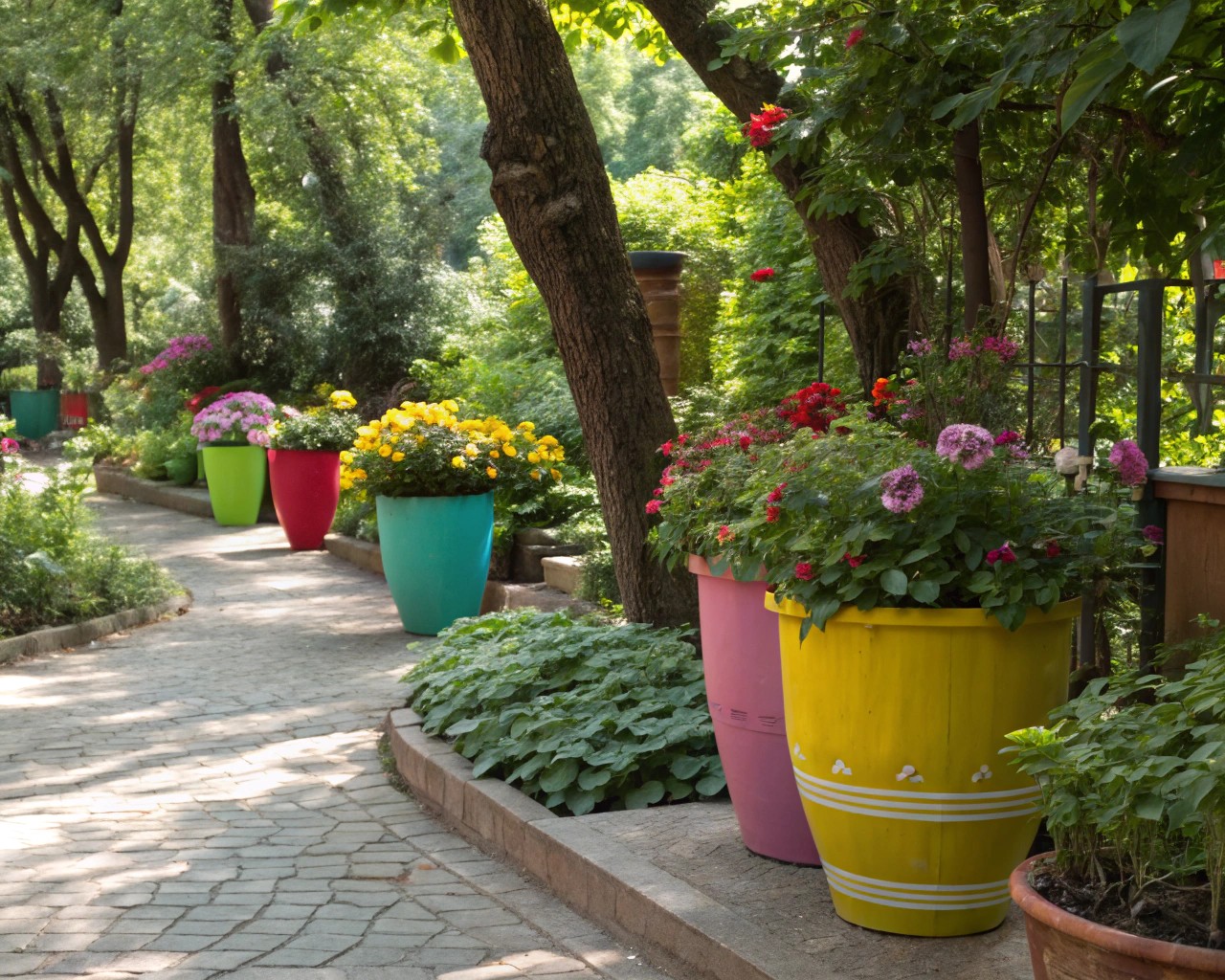
When working with particularly challenging shade conditions, containers offer tremendous flexibility, and garden advisors often suggest that a collection of containers is an effective way to add interest to these areas.
Consider these container strategies for shade:
- Group containers of varying heights
- Use brightly colored containers to add visual “pop”
- Select containers of different materials for textural interest
- Rotate seasonal plantings for year-round appeal
- Position containers to catch available light
Enhancing the Shade Garden Experience
Lighting Makes All the Difference
In deeply shaded gardens, thoughtful lighting transforms the space, allowing enjoyment well into the evening hours.
Garden experts advise that incorporating lighting can transform a shade garden. Options such as solar lights, fairy lights, or spotlights can be used effectively to highlight standout plants or garden features.
Good lighting can make your shade garden shine, illuminating key features and extending its beauty into the evening hours.
Water Features Add Dimension
Water elements bring movement, sound, and reflective qualities that enhance shady spaces. Even a small feature like the pond created in Kevin Lee Jacobs’ woodland garden can make a significant difference: “Because mosquitoes are drawn to still water, I submerged a small pump in the pond, which keeps the water moving”.
Creating Outdoor “Rooms”
Shade gardens naturally lend themselves to creating intimate spaces that feel like outdoor rooms. These secluded areas can become favorite retreats during hot summer days.
Consider designer Susanna Grant’s transformation of an East London “side return” from a neglected space into a thriving shade garden. What could have become “dumping grounds for bikes, toys, bins, and the like” was instead transformed into a beautiful garden space filled with ferns, flowers, and shrubs in containers.
Embracing Seasonality in Shade Gardens
While many assume shade gardens lack seasonal interest, thoughtful planning can ensure year-round appeal:
- Spring: Focus on early bloomers like hellebores, pulmonaria, and spring bulbs that emerge before tree canopies leaf out
- Summer: Emphasize foliage plants with different textures and colors
- Fall: Include plants with autumn interest like Japanese maples or oakleaf hydrangeas
- Winter: Incorporate evergreens, plants with interesting bark, and winter-blooming hellebores
“I only like to garden in the shade, so for me it’s fun to work in the backyard,” shares Vermont gardener Heather. “It gets about 4 hours of sun per day, so most of the day is shaded and easy to work. It’s just enough sun that we can pretty much grow most things”.
Embracing the Beauty of Shade
Shaded areas in the landscape need not be viewed as limitations but rather as opportunities to create distinctive garden spaces with their own unique character. As garden designer Susanna Grant discovered, even the darkest urban space between buildings can be transformed into “nothing short of enchanting”.
By understanding your specific shade conditions, selecting appropriate plants, employing thoughtful design principles, and adding personal touches, you can create a shade garden that becomes not just a problem solved, but a favorite destination in your landscape—a cool refuge that invites lingering and offers a different kind of garden beauty.




